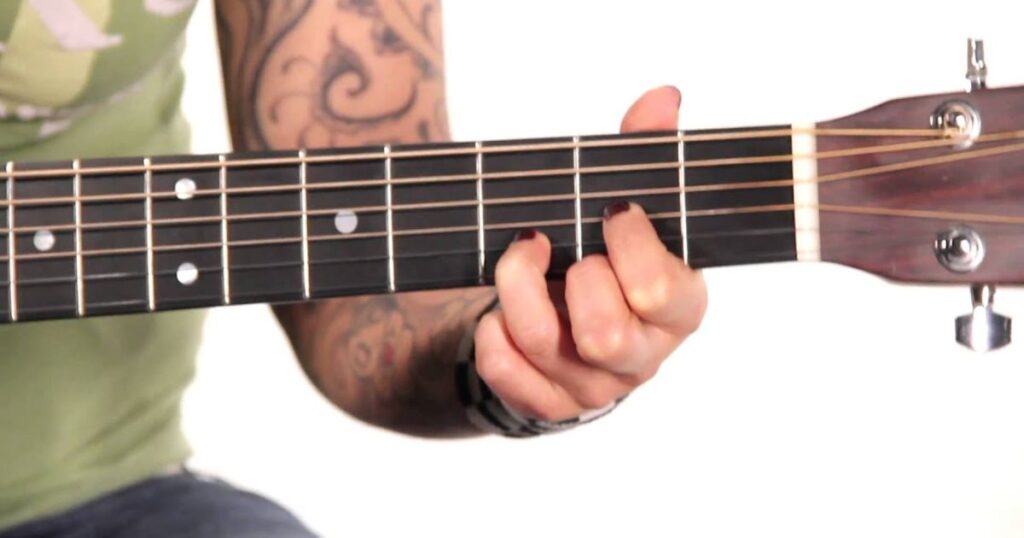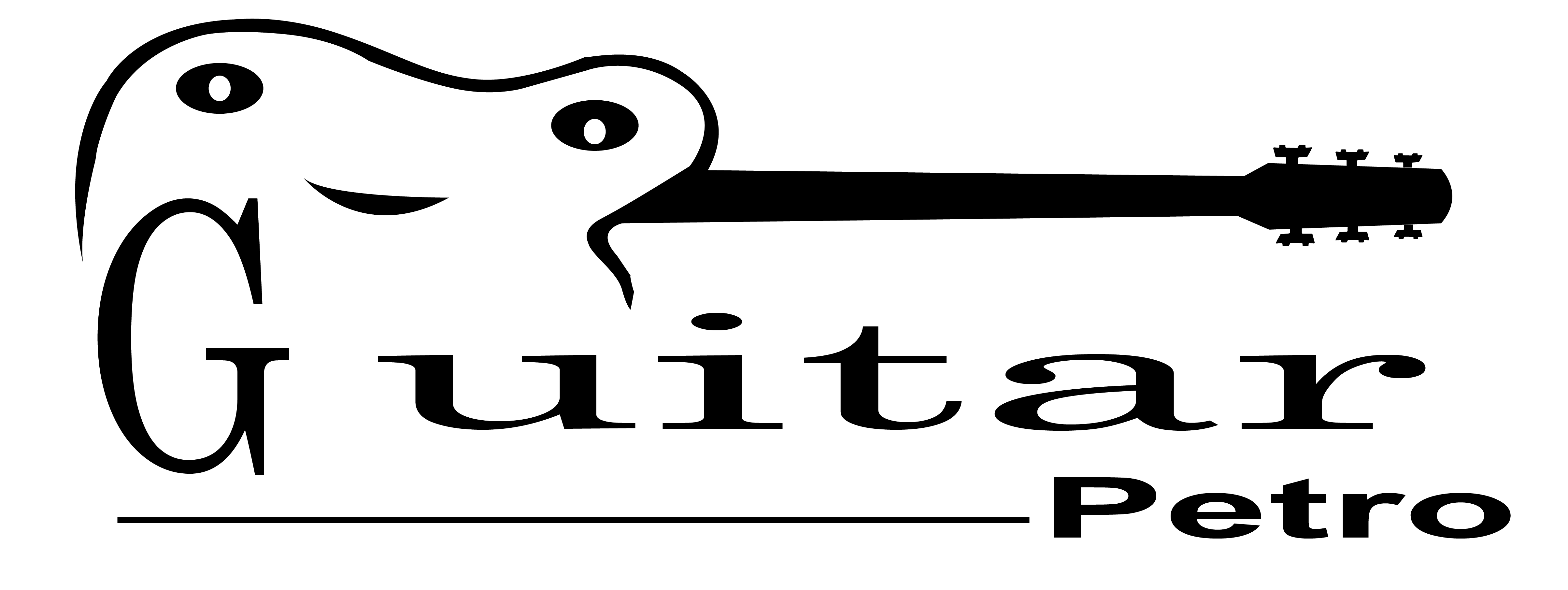A minor chord on an acoustic guitar is a fundamental element in music. It’s composed of three specific notes played together, forming a chord that carries a unique and emotive quality. This chord consists of the root note, the minor third, and the perfect fifth, creating a harmonious yet slightly sad or introspective sound. In chord charts, it’s represented as Am.
Close your eyes and picture the serene ambiance of a cozy evening. A talented musician strums their acoustic guitar, and the gentle, haunting tones of the A minor chord fill the room. The sound evokes emotions and tells stories with its melancholic, yet captivating resonance. The A minor chord, often known as Am, is a favorite among musicians and songwriters for its ability to infuse depth and feeling into their compositions.
When you explore the world of music, you’ll find that the A minor chord is a crucial ingredient in countless songs. It plays a pivotal role in creating soulful and touching melodies that have left an indelible mark on the music world. Iconic tracks such as Yesterday by The Beatles or Creep by Radiohead are brought to life, in part, by the haunting allure of the A minor chord. Whether you’re just starting your guitar journey or have been strumming for years, mastering the A minor chord is an essential skill that enables you to craft beautiful, emotionally resonant music on your acoustic guitar.
What is a Chord?
Before we delve into the A minor chord, it’s essential to understand the concept of a chord itself. A chord is a combination of two or more notes played simultaneously, creating a harmonious sound. In music, chords serve as building blocks, forming the harmonic structure of a song or a piece of music. They play a crucial role in creating the mood and emotional impact of the music.
The A Minor Chord
The A minor chord, also known as Am or Amin, is one of the most basic and commonly used chords in the guitar repertoire. It belongs to the family of minor chords and is often employed in a wide variety of musical genres, including rock, folk, blues, and more. The A minor chord has a distinctive and somewhat melancholic sound, making it a versatile choice for various musical contexts. If you’re looking to experiment with its tonal qualities, try plugging your acoustic guitar into an electric amp to explore new sonic possibilities.
Playing the A Minor Chord

Now that we understand the significance of the A minor chord, let’s break down the basics of playing it on the acoustic guitar. If you’re wondering, How to play A Minor, you’re in the right place to get started.
Finger Positioning
Proper finger positioning is essential for playing chords cleanly and efficiently. Here’s how to play the A minor chord:
1: Start with the Open A String
- Place your guitar in a comfortable playing position.
- Begin by letting the open A string (the 5th string) ring out. This string will serve as the root note of the A minor chord.
2: Place Your Fingers
- Use your index finger (1st finger) to press down the 1st fret on the 2nd string (B string).
- Position your middle finger (2nd finger) on the 2nd fret of the 3rd string (G string).
- Your ring finger (3rd finger) goes on the 2nd fret of the 4th string (D string).
3: Strum from the A String
- To strum the A minor chord, start your strumming from the A string (the 5th string) and avoid hitting the low E string (the 6th string).
- Aim to strum all the strings from the A string down to the high E string (the 1st string).
Common Mistakes to Avoid
Playing the A minor chord may seem simple, but there are common mistakes that beginners often make. To ensure you’re on the right track, be mindful of these potential pitfalls:
Fretting Too Hard
Pressing the strings too hard with your fingers can cause the strings to buzz or produce a muted sound. Instead, apply just enough pressure to make the strings sound clear.
Finger Placement
Make sure your fingers are placed close to the frets but not directly on top of them. This will help you avoid unintentional buzzing or muted notes.
Muting Adjacent Strings
Be cautious not to touch or mute the adjacent strings with your fretting fingers. Keep your fingers arched and avoid any unintentional contact with neighboring strings.
Strumming Properly
Start your strumming from the A string, and make sure you don’t accidentally strum the low E string. Strum all the strings with a consistent motion.
A Minor Chord Variations
While the basic A minor chord is relatively easy to play, there are several variations that can add depth and complexity to your guitar playing. These variations, such as changing to nylon strings, can be used to create a richer, more dynamic sound in your music.
A Minor 7 Chord
The A minor 7 chord (Am7) is a popular variation of the A minor chord. It has a more jazzy and mellow quality. To play Am7, follow these steps:
Finger Positioning:
- Place your index finger on the 1st fret of the B string.
- Use your middle finger to press down the 2nd fret of the D string.
- Your ring finger goes on the 2nd fret of the G string.
- Leave the A string (5th string) open and avoid strumming the low E string.
A Minor 9 Chord
The A minor 9 chord (Am9) is another intriguing variation. It’s slightly more complex but offers a unique and pleasant sound. To play Am9, follow these steps:
Finger Positioning:
- Place your index finger on the 1st fret of the B string.
- Use your middle finger to press down the 2nd fret of the D string.
- Your ring finger goes on the 2nd fret of the G string.
- Place your pinky on the 2nd fret of the high E string (1st string).
- Avoid strumming the low E string.
A Minor Barre Chord
A minor barre chord are moveable chords that can be played up and down the neck of the guitar. To play the A minor barre chord, you’ll need to use your index finger to bar all the strings at a specific fret while forming an A minor shape with your other fingers. Here’s how:
Finger Positioning:
- Use your index finger to bar all the strings on a specific fret. For example, if you want to play an A minor barre chord on the 5th fret, bar all the strings with your index finger at the 5th fret.
- Place your middle finger on the 7th fret of the A string.
- Use your ring finger to press down the 7th fret of the D, G, and B strings.
- Strum all the strings from the A string down to the high E string.
A Minor Chord Inversions
Chord inversions involve changing the order of the notes within a chord to create different voicings. Experiment with minor chord inversions to add depth and variety to your chord progressions. Here’s an example of an A minor chord inversion:
Inversion 1:
- Place your index finger on the 1st fret of the B string.
- Use your middle finger to press down the 2nd fret of the G string.
- Put your ring finger on the 3rd fret of the D string.
- Strum from the A string to the high E string.
Inversion 2:
- Place your index finger on the 5th fret of the high E string (1st string).
- Use your middle finger to press down the 7th fret of the B string.
- Put your ring finger on the 7th fret of the G string.
- Strum all the strings, starting from the high E string.
By incorporating these variations and inversions into your playing, you can create more complex and interesting musical compositions.
Practical Tips for Playing A Minor Chord
To master the A minor chord and its variations, it’s crucial to practice consistently and efficiently. Here are some practical tips to help you improve your A minor chord playing:
Warm-Up Exercises
Warm up your fingers and hands with some simple stretching exercises before playing. This will help increase flexibility and reduce the risk of strain.
Metronome Practice
Use a metronome to practice your chord changes at a slow and steady pace. Gradually increase the tempo as you become more comfortable with the chord transitions.
Correct Hand Position
Maintain proper hand position and posture while playing. Ensure your wrist is not bent awkwardly and your fingers are pressing the strings cleanly.
Take Breaks
Avoid overworking your fingers. Take short breaks during practice sessions to prevent hand fatigue and injury.
Use Chord Transition Exercises
Practice transitioning between the A minor chord and other commonly used chords, such as C, G, and D. Smooth chord transitions are crucial for playing songs smoothly.
Record and Self-Assess
Record yourself playing the A minor chord and listen for any inconsistencies or buzzing strings. Self-assessment can help you identify areas for improvement.
Experiment with Strumming Patterns
Explore different strumming patterns to add dynamics to your chord progressions. Try varying the tempo and rhythm to create unique sounds.
Learn Songs
Learn songs that use the A minor chord to apply your skills in a musical context. Playing along with your favorite songs is an enjoyable way to practice.
A Minor Chord in Popular Songs
The A minor chord is featured in countless popular songs across various genres. Learning to play songs that incorporate the A minor chord can be an excellent way to practice and improve your guitar skills. Here are a few well-known songs that use the A minor chord:
House of the Rising Sun by The Animals
This iconic song features a simple but haunting A minor progression, making it a great choice for beginners.
Knocking on Heaven’s Door by Bob Dylan
Bob Dylan’s classic tune includes the A minor chord in a straightforward chord progression, making it a favorite for aspiring guitarists.
Hotel California by Eagles
This legendary rock ballad includes A minor as part of its iconic chord sequence, offering a more challenging application of the chord.
Wonderwall by Oasis
Oasis’s hit song Wonderwall is known for its A minor chord usage in the intro and throughout the song, making it a popular choice for acoustic guitar enthusiasts.
Hallelujah by Leonard Cohen (covered by Jeff Buckley)
The A minor chord is featured prominently in this soul-stirring song, showcasing its emotive qualities.
FAQs
- What is an A Minor Chord on an Acoustic Guitar?
- An A Minor chord on an acoustic guitar is a combination of three notes played together, making a sad and beautiful sound.
- How do I play an A Minor Chord on an Acoustic Guitar?
- To play A Minor, put your fingers on the correct frets of the guitar strings following a simple diagram, then strum to make the chord sound.
- Why is the A Minor Chord important for acoustic guitar players?
- The A Minor chord is essential because it adds emotion and depth to music, making it a favorite among songwriters and guitarists for crafting heartfelt melodies.
Conclusion
The A Minor chord on the acoustic guitar is a small yet powerful musical element. Comprising three notes played together, it creates a heartfelt and often melancholic tone, adding depth and emotion to music. Whether you’re a beginner or an experienced guitarist, mastering the A Minor chord is a valuable skill for crafting beautiful acoustic melodies.
This chord’s simplicity doesn’t diminish its significance. It’s a key ingredient in numerous iconic songs, like The Beatles’ “Yesterday” and Radiohead’s “Creep.” The A Minor chord gives musicians the ability to convey a wide range of emotions, making it a staple in songwriting and a favorite among guitarists. So, as you strum your acoustic guitar, remember the A Minor chord’s ability to captivate hearts and tell stories through its evocative sound. Whether you’re playing for yourself or an audience, this chord can elevate your music and stir the soul with its beauty and depth. So, keep practicing, and let the A Minor chord be your companion in creating moving acoustic guitar music.




